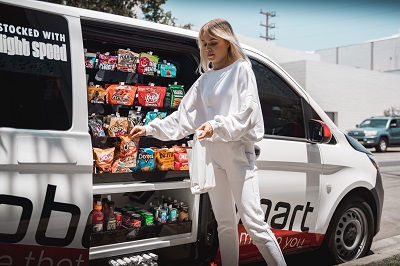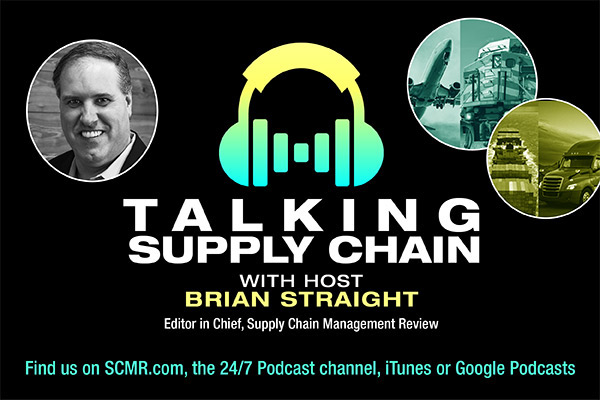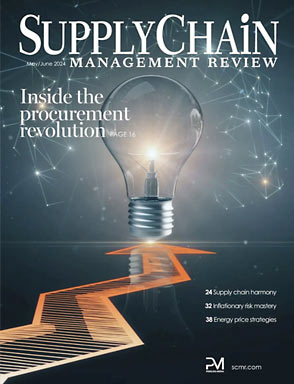Believe it or not, I had a life in specialty retailing outside of my work in magazine publishing. For nearly 33 years, my wife and I owned a women’s and children’s clothing store. While my wife retired in 2017, I’m still fascinated by emerging and evolving retail models.
For example, when I landed at Midway Airport on a recent trip to Chicago, I stopped at a Hudson News that was piloting self-service checkout like grocery and drug stores – the only employee was there if you needed a bag or had trouble paying for your item.
On the return, I shopped in another terminal at a Hudson Nonstop, a store using Amazon technology to completely automate the shopping experience. You scan a credit card when you enter the store through a portal; camera technology links you to your credit card and then automatically charges your credit card for any items you carry through the portal. The only employee in that store was posted at the exit to assure you it was OK to walk out with the items in your hand: You’d get charged.
When I landed back in New Hampshire, I stopped at a McDonald’s near the airport where I placed and paid for my order digitally through a kiosk and then picked it up at the counter. The cash register was a relic from another era.
So, it’s no surprise that a press release from Robomart caught my eye and led to a call with Ahmed Ali, the company’s Los Angeles-based co-founder. It’s not really a supply chain story, but, if the concept catches on the way Ahmed envisions, there are some supply chain implications that could give a new meaning to smaller and more frequent deliveries for replenishment. More on that later.
Robomart has created a new retail model, something Ali calls “store hailing. You’re hailing a store like hailing a ride, except that we’re delivering a store.” He adds that the model “is the first new way to shop since the launch of e-commerce 30 years ago.” Now, I don’t know if that’s true, but it’s a good line.
What is store hailing? It’s not unlike ride hailing in that you’re using an app as you would with Uber or Lyft to call up a store and pay for your order. In this instance, Robomart has reconfigured a van to be a mobile store on wheels. As a consumer, you download the Robomart app and enter in your payment information just like the Uber or Lyft app. You can check out the available inventory online, and if you see something you want, you hail a store. A typical Robomart stocks 50 to 60 SKUs. The vehicles are not autonomous – yet. However, the driver is not involved in the transaction, and Ahmed’s vision for the future is for autonomous vehicles, when they’re ready for prime time.
What happens next is pretty seamless and totally autonomous. The Robomart pulls up in front of your residence in about 2 minutes after you place the order; a swipe of the app opens the van door, and you pick the items you want to buy. When you close out of the app, the van door closes and your credit card is charged. The items in the Robomart are RFID-enabled, which is how the app knows what you removed. “The average across all orders is about 9 minutes from start to finish,” Ali says. “We don’t have any third party delivery person picking products for you, and when others talk about 30-minute delivery times, that’s just the drive time.”
Ali says his co-founder developed the idea for on-demand delivery about 14 years ago when the pair were working at Unilever. “It was too early,” he says. After working with an on-demand delivery startup in the U.K., Ali came to the U.S., contacted his former colleague and together, they developed and then introduced the concept at CES in 2018. They launched a pharmacy Robomart in 2020 in West Hollywood that stocked over the counter remedies, household goods and personal care items like shampoo and soaps. A snack Robomart went live in June of 2021. Currently, the Robomarts are operating in a 6-to-8 square mile area in West Hollywood and Hollywood. The plan is to expand to more cities in California and then to major cities on the East Coast. Ali declines to say how many vehicles he has in operation for competitive reasons.
Now to the supply chain implication. For now, Robomart is stocking and operating all of its mobile stores. But the company recently launched a platform for retailers that want to book and deploy a Robomart of their own. And, while its further off in the future, perhaps a driverless Robomart.
How would a retailer restock its Robomarts? Ali says that currently Robomart operates a restocking location in every zone where it operates. A retailer would deliver the goods they want to stock to a designated pod at the stocking location where Robomart personnel can restock the van. Right now, Robomarts are restocked on a set schedule; however, a system is in place that can alert staff at the station that a vehicle needs replenished so they can have the items ready to go when the van returns to the restocking location. That same system could be used to alert a retailer when a pod needs replenished. How that would work is anyone’s guess, but I can imagine using brick-and-mortar retail stores in an area to replenish the stocking pods.
If I lived in West Hollywood, I don’t know if I’d use a Robomart, although snack food is usually one of my weaknesses. But I’m captivated by the concept. And, I think it further illustrates the innovation out there as retailers look for new and ingenious ways to get closer to their customers.
SC
MR


Latest Supply Chain News
- Few executives believe their supply chains can respond quickly to disruptions
- Technology’s role in mending supply chain fragility after recent disruptions
- Tech investments bring revenue increases, survey finds
- Survey reveals strategies for addressing supply chain, logistics labor shortages
- Israel, Ukraine aid package to increase pressure on aerospace and defense supply chains
- More News
Latest Podcast

 Explore
Explore
Latest Supply Chain News
- Few executives believe their supply chains can respond quickly to disruptions
- Technology’s role in mending supply chain fragility after recent disruptions
- Tech investments bring revenue increases, survey finds
- Survey reveals strategies for addressing supply chain, logistics labor shortages
- Israel, Ukraine aid package to increase pressure on aerospace and defense supply chains
- How CPG brands can deliver on supplier diversity promises
- More latest news
Latest Resources

Subscribe

Supply Chain Management Review delivers the best industry content.

Editors’ Picks




